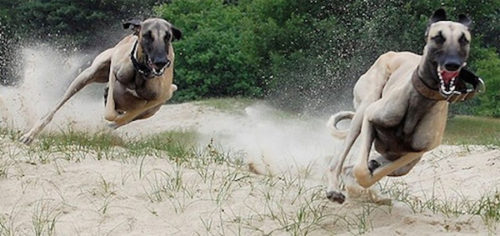
If oceans are the last frontier on earth, the dog breeds of India may among the last in the world to be appreciated.
In some measure, this is because of the indifference of Indians to their own indigenous breeds. Dogs weren’t associated with any religious or cultural functions, and they were essentially working dogs owned by working class people. As compared to elephants and lions, and depending upon the region or period of time, dogs made few appearances in art. Add to this that it was imported (“exotic”) dog breeds that captured the interest of Indians over their own “home-grown” breeds, and it was difficult for native breeds to, as they say colloquially, “feel the love.” Bloodlines of native breeds were diluted by cross-breeding, and a ban on hunting in 1972 further jeopardized native breeds, one of the main reasons that anyone in India kept dogs at all. Interestingly, there was enough foreign interest in Indian dogs to see a large number of them exported to Rome and Egypt in ancient times, and Indian dogs have even been linked to dingoes of Australia through DNA testing done at the Australian Centre for Ancient DNA.
Happily, the situation for indigenous breeds is changing for the better. British interest in native dogs lead to the formation of clubs in the late 19th century, and over time, a dog fancy has grown in India. In the 1960s, the Kennel Club of India allowed a few native breeds, such as the Rampur Hound, to enter a show ring which lead to an interest in creating breed standards.
Fast forward to the 21st century when a huge boost was given to the Mudhol Hound (named after the small town of Mudhol in the Bagalkot District) the Karnataka Veterinary, Animal Husbandry and Fisheries Sciences University. A parcel of land and a bit of money was allotted expressly for a Mudhol Hound breeding program.
What a huge difference can be made by some interest and support. The first Indian dog breed to serve in the Indian Army is the Mudhol Hound. Don’t miss the video below that provides more information on this exquisite sighthound:
It’s important to note that in many reference guides, the Mudhol Hound is described as being also known as the Caravan Hound. This is untrue. The two are distinct and separate breeds which author, S. Theodore Baskaran underscores in his marvelous book, “The Book of Indian Dogs.”
You can read more about the Mudhol Hound’s recruitment into the Indian Army in this article from which the photograph comes

One thought on “The Mighty and Magnificent Mudhol Hound”